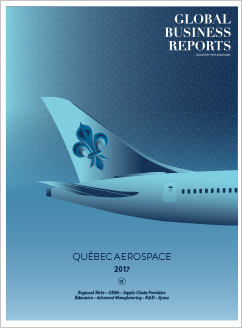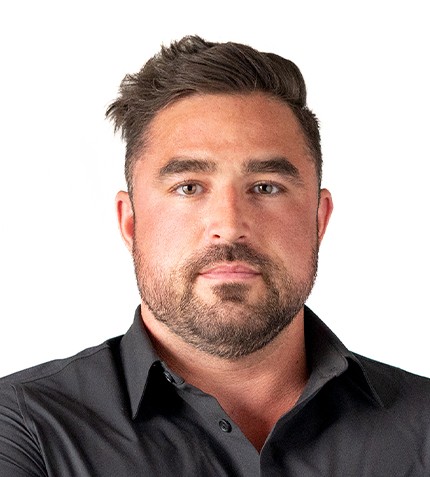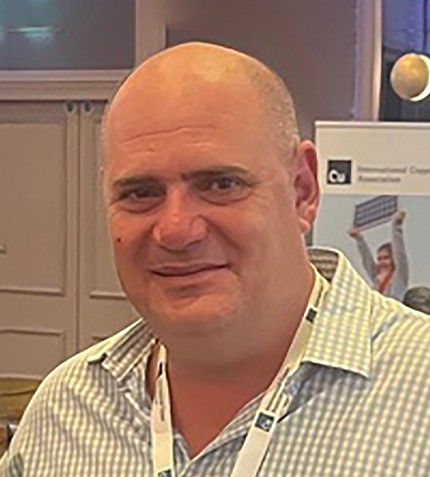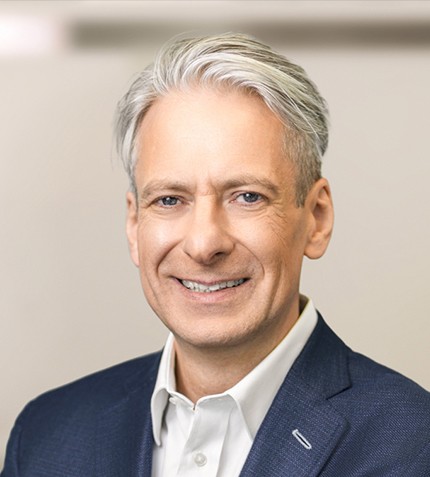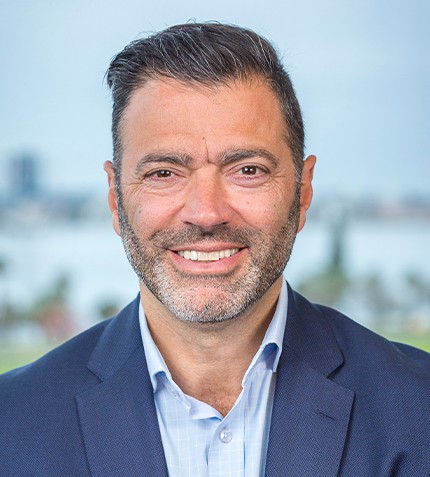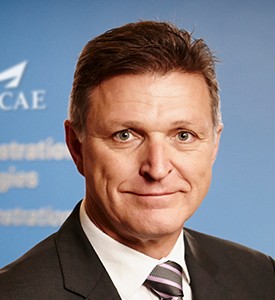
CAE is the global leader in training pilots and is constantly developing new training solutions.
RELATED PUBLICATION
ARTICLES FROM THIS PUBLICATION
- Interfacing with Industry: Québec’s Universities Fortify Aerospace Activity
- Driving Efficiency to Increase Competitiveness: Québec’s Service and Equipment Providers
- The Big Four and the Competitiveness of Québec’s Aerospace Supply Chain
- Banding Together: Québec’s Innovation Ecosystem
- Aerospace in Québec: The Case for an Industrial Policy
- A New Order: Québec’s Supply Chain Reaches Turning Point
- Québec’s Aerospace 4.0: A Solution to Cost Pressures?
- Quebéc Aerospace: Education
- Safety First
Marc Parent
PRESIDENT AND CEO, CAE
CAE is celebrating its 70th anniversary this year. What are some of the defining characteristics of the company today?
CAE is a leader in training pilots and we offer cadet to captain training solutions. Training is all we do and innovation still defines who we are. We operate more than 65 training centers and flight schools around the world and train more than 120,000 pilots annually. We continue to be the leader in the sale of flight simulators.
CAE’s evolution over the years is noteworthy, from radar and radios and TVs, it obtained its first simulator contract from the Canadian government in 1952, and then revolutionizing pilot training in 1982 by developing the world’s first commercial simulator and receiving the new Federal Aviation Administration Phase III approval (today’s Level D). Today, we are truly a training services company with 60% of our business coming from our services. We are also well balanced with nearly 60% of revenue coming from civil aviation, close to 40% from defense & security and 4% from healthcare.
This year, CAE announced a number of large aviation training contracts. Could you expand on some of these?
We recently announced our fiscal 2017 results; it has been one of the best years in our seven-decade history. We expanded our relationships with customers around the globe. In Civil Aviation Training Solutions, we continued to lead the market with a near-record year of 50 full-flight simulators sold and in training services we signed long-term contracts with Jet Airways in India, Vietnam Airlines and Korea Airports Corporation, among others.
Our Defense & Security business secured major long-term training contracts in which CAE provides the full solution. We call these Training Systems Integrator (TSI) contracts. In fact, we ramped up orders by 40% for a record $1.4 billion contracts this year. Our innovative approach enabled us to win the contract to create the U.S. Army’s new fixed-wing training center and program, which we inaugurated ahead of schedule. Other defense contracts include a 20-year naval training program for the United Arab Emirates and a contract for the French Air Force Initial Flight Training. We also won key national programs with the Fixed Wing Search and Rescue Airbus C295 training program for the Royal Canadian Air Force where CAE will provide the training centre, flight training devices, courseware and instructors. In addition, we extended our NATO Flying Training Centre program, which we deliver here in Canada, to 2023.
How is demand for skilled personnel developing?
Over the next 10 years, IATA forecasts that passenger trips will grow by more than 4% yearly, meaning the commercial aviation industry will double over the next 20 years. Airlines will need more pilots. In fact, at the Paris Air Show we introduced our first-ever CAE Airline Pilot Demand Outlook to the market. It indicates that more than 255,000 pilots will be needed in the next 10 years and that over 50% of them have not yet started to train.
New and innovative pilot career pathways and training systems will be required, which is great news for CAE. As the industry’s global pilot training partner of choice, we work with over 300 airlines and train more than 120,000 pilots annually at every phase of their career. These relationships give us a privileged vantage point of both the market and industry needs.
As pressure mounts to keep costs down and increase efficiency across the supply chain, what are the most important factors CAE considers when it comes to its suppliers?
First, quality is key. We invest in our suppliers by developing them and providing them with green belt training sessions. The second factor is cost. We use the Aéro Montréal MACH program for supplier development in order to increase competencies and the ability to drive joint cost-reduction initiatives. Thirdly, we look for suppliers that can deliver subassemblies involving mechanical parts, electrical wiring and electronic equipment. Fourth, as a signatory to the UN Global Compact, we are taking steps to ensure responsible procurement. We integrate human rights, labour, environment and anti-corruption considerations into our global strategic sourcing tools and processes. Social and environmental factors are considered alongside financial factors when making procurement decisions and are detailed among the criteria used for supplier selection. Finally, supplier innovation is captured through appropriate partnerships with relevant subcontractors.
What are CAE’s current areas of focus in terms of R&D?
CAE’s secret sauce has always been its culture of innovation. We have invested more than C$1.3 billion in R&D over the past 10 years and we continue to invest heavily today–not only in developing the latest technologies but also in our training differentiators: instructors, courseware, products and processes. One of the key elements will be how we leverage existing technologies and big data to create training programs that are tailored to the specific needs of each pilot. We call that adaptive training. If the data shows that the pilot has problems in landing with crosswinds, for example, the training program will focus on this aspect until it is mastered. We will also be working closer than ever with airlines and creating learning programs that are adapted to their specific standard operating procedures. Over the years, CAE has helped create the standards that are the basis of pilot training today and we are proud to continue shaping the future of training.
The aerospace industry is embracing Industry 4.0. How is CAE keeping up with these trends?
CAE’s global leadership in training comes in large part from our commitment to invest in both technological and operational innovation. CAE is a 4.0 company, well positioned to leverage the current technological revolution. We are embracing new digital technologies such as big data, artificial intelligence and machine learning at a fast speed. Our advanced technologies and products emerge out of our deep-rooted R&D and innovation ecosystem and processes. Our annual Innovation Challenge initiative, launched in 2012, leverages employees’ creativity to spark winning ideas that often evolve into concrete improvements and new products. This helps us to harness the value of the digital world. This year, we received more ideas than ever before, with submissions focused on cloud computing, cybersecurity, new training media and the environment.
What are the most prevalent trends in Québec’s aerospace industry, and what should the key areas of focus be going forward to maintain and further the region’s competitiveness?
Attracting, developing and retaining the best talent will always be key to our success. Québec’s aerospace industry has developed close links with schools, colleges and universities to develop talent. Quebec’s aerospace industry hires a great number of co-op students and, at CAE alone, we helped develop talent and expertise of 1,200 co-op students in the last five years. Our employees also actively mentor high school students interested in engineering and science through diverse programs and competitions. We are very present on campuses as we are currently recruiting new talent to support our growth.
Could you outline CAE’s main objectives over the next three to five years and the overall vision for the company?
Our vision is to be the global training partner of choice to our customers in the civil, defense and healthcare markets. Over the last couple of decades, CAE has established itself as a thought leader in aviation training and we are now bringing to market some of the most innovative and comprehensive solutions that we believe will enable us to unlock a greater portion of the civil aviation training market.
CAE’s strategy and investment thesis are based on six interrelated pillars of strength. We benefit from a high degree of recurring business, we have a strong competitive offering and we have significant headroom in large markets that are being driven by secular tailwinds. These factors, combined with CAE’s culture of innovation, give us the potential to generate superior returns. As we look to the period ahead, we take confidence in the strength of our position and the supportive fundamentals in our end markets.




